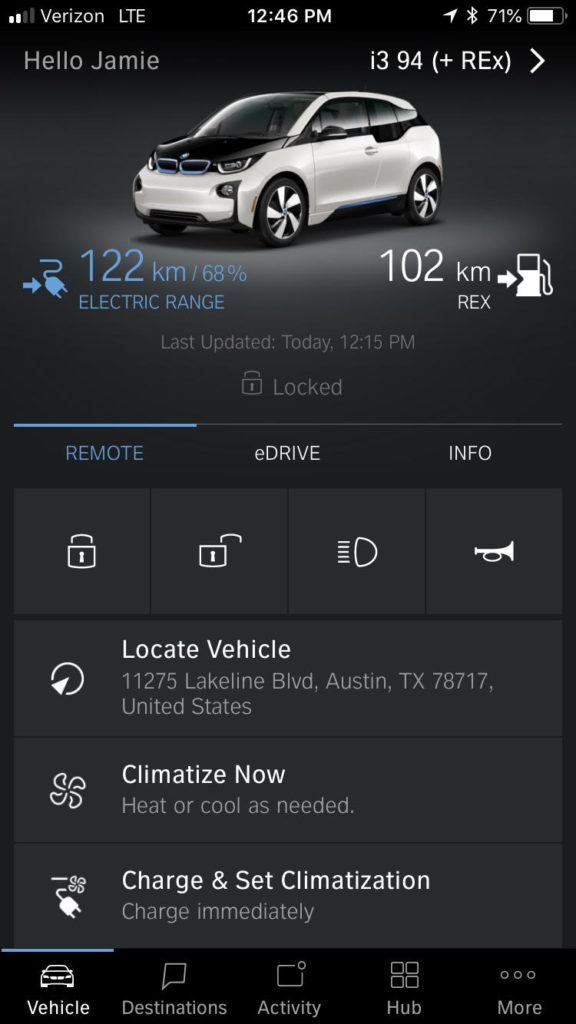Guest Blog: Modern Architecture and Design Society (MA+DS)
If you follow the news even casually, you know that electric cars are the “next big thing.” A new era for transportation is dawning, and with several nations planning to scale down, or even eliminate ICE (“internal combustion engine”) vehicle sales in the next 30 years (Norway being the most ambitious with a goal of 2025, followed by China, India, and Germany in 2030, with many other nations following soon after), it’s almost certain that electric car options will grow by leaps and bounds in the next 20 years.
But, as with our previous look at solar technology, what’s “modern” in application, isn’t actually “new.” In fact, the first electric car debuted in 1884 – 20 years before Henry Ford’s Model T, and by the turn of the 20th century, over 30,000 electric vehicles were on American roads. Eventually, the advantages of the ICE vehicle – greater range being chief among them, just as it is today – won out, and the car as we know it became the foundation of today’s world.
But now, with environmental pressure building, and with technology advancing at an almost parabolic pace, the electric car is once again pushing for a role in forward-thinking lifestyle decisions. With ranges approaching 300 miles, and perhaps more importantly, charging stations becoming more prevalent and charge times coming down, the electric car is once again becoming a viable transportation choice. We recently acquired one at the Modern Architecture + Design Society in our ongoing task of keeping up with the latest in modern design and lifestyle.

OUR Electric Car – the first three months
Our left-over (but new) 2017 BMW Electric i3 REX (with Range Extender for the range-concerned among us) has a host of improvements over the first generation vehicles, chief among them a new 33kwh (“kilowatt-hour”) battery pack, which means that fully charged, range improves from about 80 miles to a claimed 114 (give or take), we’ve already found makes a significant real-world difference (more on that later). The other nice addition is a “t-top” – styled sunroof that’s small but definitely creates a lighter, open feeling interior. We don’t need it, but we didn’t complain. Also, as mentioned, it’s a “REX” (range extender) that packs a little gas engine on board as a sort of emergency backup. The REX doesn’t move the car though, it just recharges the batteries if they get too low.

Image courtesy ModernArchitecture + Design Society
Inside, the car is “modern” in the truest sense. Constructed with a state-of-the-art CFRP (carbon fiber reinforced plastic) main cabin for strength, safety, and efficiency (CFRP is both light and strong), the interior is finished with attractive synthetic and recycled raw materials, so the car is “green” in construction as well as, theoretically, in operation. (A common criticism of electric vehicles is that the electricity used to charge their batteries is often produced by conventional “dirty” power plants – we’ll address that in a future update). The whole package ends up being almost Scandinavian-clean in appearance and practicality and is a very pleasant place to spend a commute with its light fabric, huge windscreen and upright, tall seating position.
What you really want to know.
We’ll cover driving impressions – the handling, acceleration, and cornering – in our next update, but range anxiety and charging is the massive difference that most of us worry about, and it’s definitely a change. Luckily it’s a (mostly) positive one depending on your own personal use case. But let’s get the big problem out of the way early – this isn’t a “road trip” car, and as such, many will find it difficult to consider as an ONLY car. There are ways around this – renting a car for trips, carefully plotting a route to find high-speed chargers along the way, or hacking the i3’s software to operate the car as a quasi-hybrid – but if I’m being honest these aren’t ideal solutions. Still, they’re both viable, and to be fair, reasonable people can disagree.

However, on a day-to-day basis for our use case (urban environment, max 40-50 mile commute per day) our first three months have been a revelation. Plug the car in at night (the supplied standard charger plugs into a regular outlet and recharges about 40 miles worth of power overnight), spend the day doing regular day things (going to the office, stopping by the store on the way home etc.) and wash, rinse, repeat. The whole thing is pretty seamless, with the added advantage that we haven’t been to a gas station all summer long! It’s a zippy commuter too, with a turning radius that makes tight city streets a breeze, and an upright hatchback design that’s been successful so far in hauling, among other things, 8-foot long pieces of baseboard trim and a Big Green Egg (yes, the grill!). I’ve even read online about someone that stuffed a new water heater into their BMW Electric i3, but I confess that I’m dubious…
And, when we remodel our home to go form 1979 state of the art to 2019 sometime next year, we plan to add solar power as well as a whole-house battery/power storage. Could we completely go “off-grid,” at least as far as everyday functionality is concerned? I’ll let you know. Until then, I look forward to sharing our modern electric car adventure with you.
The Modern Architecture + Design Society produces architecture and design events across North America.